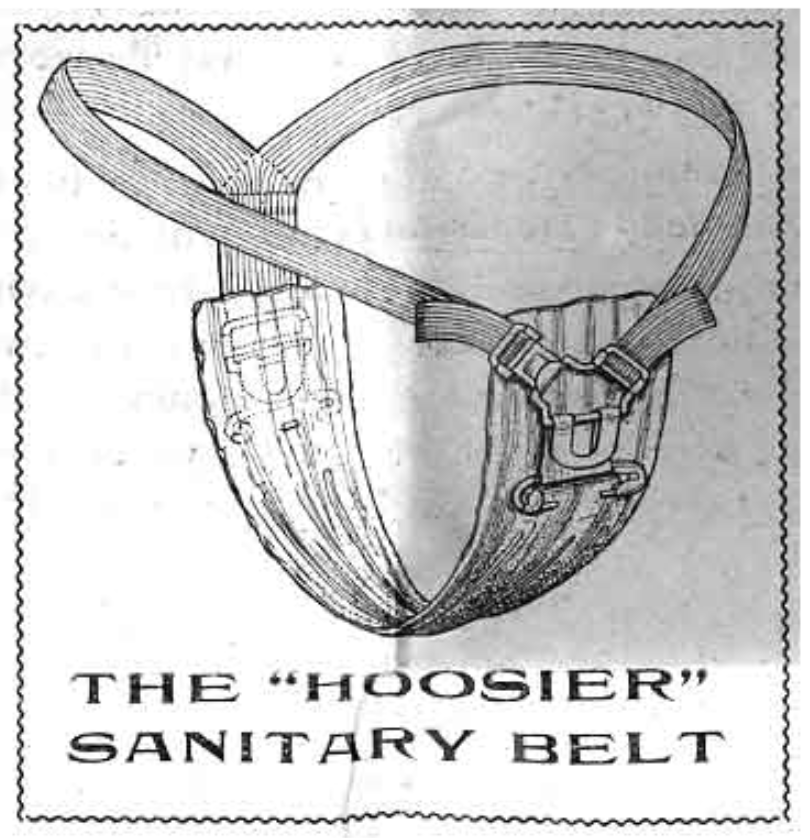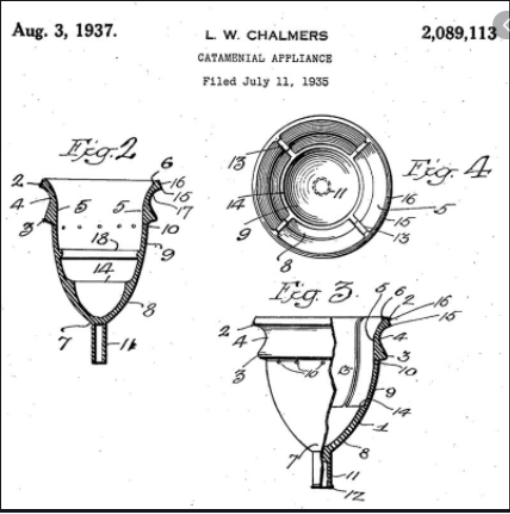A peek into the history of menstruation products - as we take a moment to be thankful for innovation!
Nowadays, we can walk into a shop or get online to access menstrual products galore, but it has not always been this way. In the USA before 1900, homemade menstrual cloths, made from what people had at hand, were the all the hype and the norm. However, in the late 1800s, the situation started to change and new commercial menstrual products were developed. So we’re taking a quick walk down menstrual lane and peeking into the history of menstrual products!
What's the history of menstrual products?
We learned a lot through this process and recommend you take a dive too! This is going to be a whiz through some of the menstrual products of history, but there are PLENTY more if you want to do some research yourself - some weird and fantastical.
Turn of the century to WW1
 Towards the end of the 1800s, concerns grew about whether bleeding into homemade rags or your underwear was sanitary and new products that you could buy were invented. A couple of these products? The Hoosier sanitary belt (Bushak, 2016) was a belt that went around your waist for which you could purchase washable pads (Bushak, 2016) (Note, this belt was not elasticized! Pretty uncomfy looking right?) Sanitary belts similar to this stayed around until the 1970s!
Towards the end of the 1800s, concerns grew about whether bleeding into homemade rags or your underwear was sanitary and new products that you could buy were invented. A couple of these products? The Hoosier sanitary belt (Bushak, 2016) was a belt that went around your waist for which you could purchase washable pads (Bushak, 2016) (Note, this belt was not elasticized! Pretty uncomfy looking right?) Sanitary belts similar to this stayed around until the 1970s!
Then in 1896, the first commercially-available disposable pads were produced in the US. These pads, made by Johnson & Johnson, unfortunately weren’t allowed to be advertised (Kvatum, 2016), which eventually led them to flop (Jennifer Kotler, 2018).
WWI actually was the catalyst for the invention of Kotex Sanitary Napkins, which are still around today! During WW1, bandages were made from cellucotton, a wood pulp (Eschner, 2017) that is extremely absorbent and was very cheap. After wartime, this material was developed into the Kotex Sanitary Pad (The Smithsonian Institution), and was first sold to the American public in 1918 (Bushak, 2016).
WW1 - 1950s
We’re not done with Kotex napkins yet though! In the ‘20s, they had a significant advertising campaign in women’s magazines and sold products through pharmacies and mail-order catalogs (The Smithsonian Institution). With this push, they saw substantial sales and commercial success.
Kotex sanitary pads weren’t the only menstrual product to be developed out of war (who would have thought, huh?) Tampons were originally used to stop bleeding in deep wounds as well as to add medicines (The Smithsonian Institution) into the body. In the late 1920s and early 1930s however, patents for menstrual tampons were filed and the first commercially advertised tampons, called fax tampons (Kvatum, 2016), were sold. A tampon patent filed in 1931 by E.C. Haas had the first commercial success, and eventually became the Tampax tampon (The Smithsonian Institution)! Woah.

The menstrual cup was also developed during this period (the pun that keeps on giving!). In 1937, American actress Leona Chalmers invented and patented a menstrual cup model that is very similar to the one that is widely used today! This design was made from latex rubber (Kurjanen, 2017), and in 1956 she updated it to feature softer materials, more similar to the material in our cups now (Jennifer Kotler, 2018).
Tassette was the first menstrual cup company to run a substantial advertising campaign, doing so in the 1950s. However, it wasn’t a success long-term and the company dissolved in the 1970s.
1960 - 1990s
Let’s skip forward to the 1970s for something pretty exciting, the self-adhesive menstrual pad! Yes, that’s right, menstrual pads weren’t able to stick to your underwear until the 1970s (Kvatum, 2016). Shook. We had some tampon development too! The plastic, dome-tipped tampon applicator introduced by Playtex in 1973 (Fetters, 2015).
The 1980s also saw some menstrual pad developments, with versions of our current maxi pad and pad with wings gracing the market (Jennifer Kotler, 2018) and this decade also saw the commercial reintroduction of the menstrual cup with ‘The Keeper’.
2000s onwards
From the late 2000s, there has been an uptick in innovation, although the basic menstrual products themselves have stayed the same (tampons, sanitary pads, menstrual cups, and menstrual underwear). Some new products include CBD tampons (!*) and new menstrual cup designs. In the menstrual product world, the quality of materials has also become a (much needed!) focus as has sustainability. So there you have it, a quick and dirty sneak peek into the history of menstrual products!
*While this sounds incredibly cool, speak to your trusted healthcare provider before trying an internal product like this.
________
References
Bushak, L. (2016, May 23). A Brief History Of The Menstrual Period. Retrieved August 20, 2020, from https://www.medicaldaily.com/menstrual-period-time-month-history-387252
Eschner, K. (2017, August 11). The Surprising Origins of Kotex Pads. Retrieved August 20, 2020, from https://www.smithsonianmag.com/innovation/surprising-origins-kotex-pads-180964466/
Feminine Hygiene Products. (n.d.). Retrieved August 20, 2020, from https://www.si.edu/spotlight/health-hygiene-and-beauty/feminine-hygiene-products
Fetters, S. (2015, June 01). The Tampon: A History. Retrieved August 20, 2020, from https://www.theatlantic.com/health/archive/2015/06/history-of-the-tampon/394334/
Jennifer Kotler, P. (2018, November 21). How modern tampons and pads were developed. Retrieved August 20, 2020, from https://helloclue.com/articles/culture/a-short-history-of-modern-menstrual-products
Kurjanen, H. (2017, April 25). Short History of Menstrual Cups. Retrieved August 20, 2020, from https://www.lunette.com/blogs/news/short-history-of-menstrual-cups
Kvatum, L. (2016, April 25). A period comes to an end: 100 years of menstruation products. Retrieved August 20, 2020, from https://www.washingtonpost.com/national/health-science/a-period-comes-to-an-end-100-years-of-menstruation-products/2016/04/25/1afe3898-057e-11e6-bdcb-0133da18418d_story.html
Thomas A. Edison Papers. (2016, October 28). Retrieved August 20, 2020, from https://edison.rutgers.edu/pictures.htm
Popular reads on YPC
How to Talk About Your Period With Men
Talking about periods with male friends and co-workers doesn’t have to feel like unleashing landmines.
Read moreWhy and When Did Menstruation Become Taboo?
From the Yukon to Greece, taboos around menstruation have been around for ages and still…
Read moreSocial Media’s Important Role in Reducing Period Stigma
From the explosion of period art, to serving as an activist platform in the menstrual…
Read more